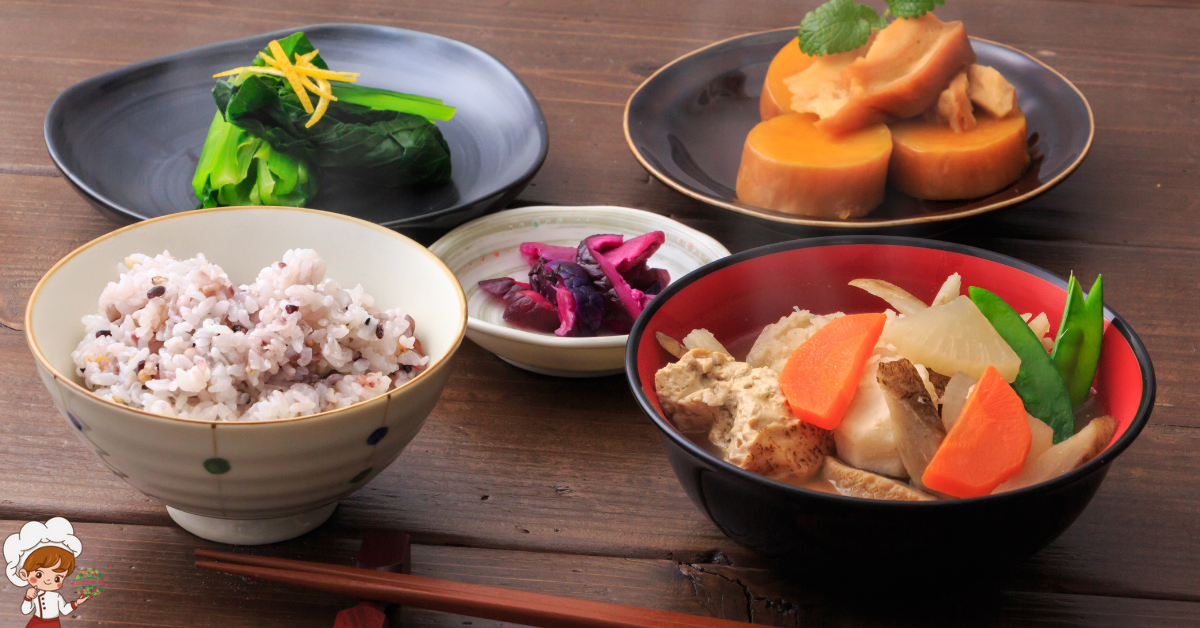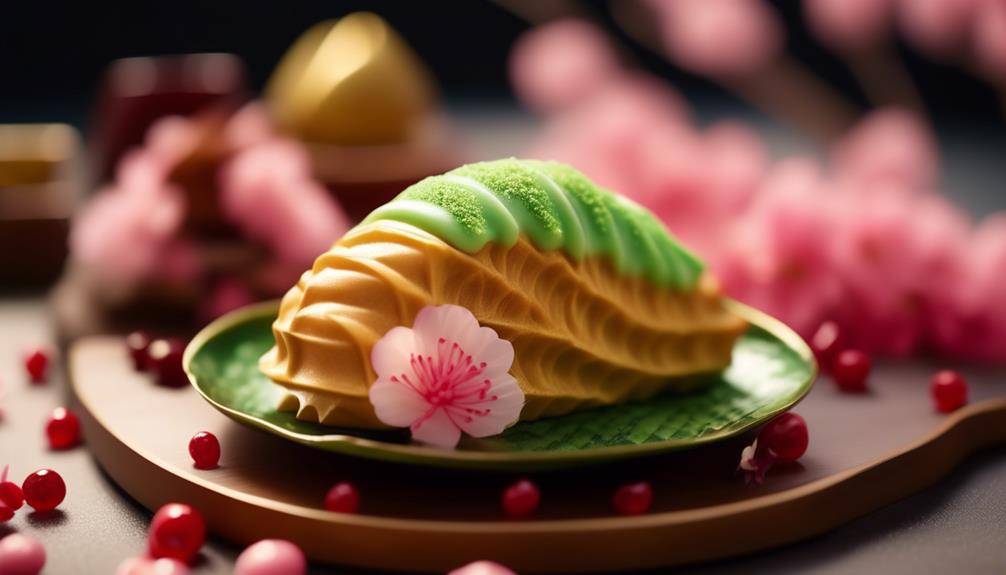Authentic Japanese Kaiseki Vegetarian Options

Are you tired of the same old vegetarian options when dining out? Well, get ready to embark on a culinary journey that will tantalize your taste buds with the finest flavors of Japanese Kaiseki Vegetarian Options.
Authentic Japanese Kaiseki cuisine, with its intricate presentation and meticulous attention to detail, is like a symphony of flavors dancing on your palate. But what about those of us who prefer a plant-based diet? Fear not, for within the realm of Kaiseki, there exists a world of vegetarian options waiting to be explored. From traditional seasonal dishes to innovative creations, the possibilities are endless. So, sit back, relax, and let us take you on a gastronomic adventure that will leave you craving for more.
History of Kaiseki Cuisine
Kaiseki cuisine, a traditional Japanese dining experience, has a rich and fascinating history that dates back centuries. The evolution of kaiseki cuisine has been influenced by various factors, including the changing seasons, the Zen philosophy, and the cultural significance of kaiseki.
Kaiseki originally began as a simple meal served during tea ceremonies in the 16th century. It consisted of a bowl of soup and a few side dishes, with an emphasis on quality and presentation. Over time, kaiseki evolved to become a multi-course feast, with each dish meticulously prepared and presented to showcase the natural flavors and textures of the ingredients. The artistry and attention to detail in kaiseki are unparalleled, making it a true gastronomic experience.
The cultural significance of kaiseki cannot be overstated. It is considered a high form of culinary art, reflecting the Japanese values of simplicity, balance, and harmony. Kaiseki chefs strive to create a harmonious balance of flavors, colors, and textures in each dish, taking inspiration from the natural world. The use of seasonal ingredients is a key element of kaiseki, as it reflects the Japanese appreciation for the changing seasons and the beauty of nature.
In addition to its culinary significance, kaiseki has also become a symbol of hospitality in Japan. It is often served in traditional ryokan inns, where guests are welcomed with a kaiseki meal as a way to showcase the host’s generosity and attention to detail. The experience of eating kaiseki is not just about the food itself, but also about the atmosphere, the service, and the overall sensory experience.
Traditional Kaiseki Course Structure
As we move from exploring the rich history of kaiseki cuisine, it is time to delve into the intricate structure of a traditional kaiseki course. The traditional kaiseki meal is not just a meal, but a carefully crafted experience that follows a specific sequence. Here is a breakdown of the traditional kaiseki course structure:
- Hassun: This is the opening course of the kaiseki meal and typically consists of a variety of small dishes. It is meant to set the tone for the rest of the meal and showcase the skills of the chef. The dishes in the hassun course are often seasonal and beautifully presented, reflecting the changing nature of Japanese cuisine.
- Mukozuke: This course focuses on sashimi, which is thinly sliced raw fish or seafood. The presentation of the sashimi is crucial, as it should highlight the freshness and quality of the ingredients. The mukozuke course is a testament to the meticulousness and attention to detail that goes into preparing a kaiseki meal.
- Yakimono: The third course of a traditional kaiseki meal is the yakimono, which consists of grilled dishes. This course often includes a variety of proteins, such as fish, meat, or tofu, that are expertly cooked over an open flame. The yakimono course showcases the chef’s skill in handling different cooking methods and brings a smoky and savory element to the meal.
Traditional kaiseki etiquette is an essential part of the dining experience. It is customary to appreciate each course with gratitude and to eat each dish in its entirety before moving on to the next. The cultural significance of kaiseki lies in its emphasis on seasonality, balance, and the use of fresh, local ingredients. Each course tells a story and is thoughtfully prepared to provide a harmonious and memorable dining experience.
Vegetarian Ingredients in Kaiseki
One cannot underestimate the importance and abundance of vegetarian ingredients in the world of kaiseki cuisine. Vegetarian kaiseki recipes are not only a reflection of the Japanese culinary tradition, but they also hold a deep cultural significance. The use of vegetarian ingredients in kaiseki showcases the respect and appreciation for nature, as well as the skill of the chef in creating a harmonious balance of flavors and textures.
Vegetarian kaiseki recipes often feature an array of seasonal vegetables, mushrooms, tofu, seaweed, and other plant-based ingredients. These ingredients are carefully selected to highlight their natural flavors and textures, allowing the diner to fully appreciate the essence of each ingredient. From the crispness of fresh vegetables to the umami-rich taste of mushrooms, every bite is a celebration of the natural world.
The cultural significance of vegetarian kaiseki lies in its connection to Buddhism. In Japan, Buddhism has a long-standing tradition of vegetarianism, and kaiseki cuisine has been influenced by this practice. Vegetarian kaiseki meals are often served in Buddhist temples as a form of meditation, allowing the diner to experience a sense of tranquility and mindfulness through the act of eating.
In addition to its cultural significance, vegetarian kaiseki also offers a healthier alternative to traditional kaiseki meals. By focusing on plant-based ingredients, these meals are often lower in calories, saturated fats, and cholesterol, while still providing a satisfying and flavorful dining experience.
Seasonal Vegetarian Kaiseki Dishes
The ever-changing seasons bring forth a delightful array of vegetarian kaiseki dishes, each one a masterpiece of flavors and textures. Seasonal vegetarian kaiseki dishes not only showcase the abundant produce of each season but also promote sustainability by utilizing local ingredients. Incorporating local ingredients into vegetarian kaiseki cuisine not only ensures freshness and quality but also supports local farmers and reduces the carbon footprint associated with transportation.
Here are three examples of seasonal vegetarian kaiseki dishes that highlight the beauty of nature’s bounty:
- Spring Delights: As the cherry blossoms bloom, the spring season brings a burst of vibrant colors and delicate flavors. A spring vegetarian kaiseki dish might feature tender bamboo shoots, fresh green peas, and fragrant cherry blossom petals. The combination of these ingredients creates a dish that is light, refreshing, and full of the promise of new beginnings.
- Summer Sensations: When the summer heat arrives, the focus shifts to refreshing and cooling ingredients. A summer vegetarian kaiseki dish could showcase juicy heirloom tomatoes, crisp cucumbers, and refreshing shiso leaves. The flavors are bright, the textures are crisp, and each bite offers a respite from the sweltering heat.
- Autumn Harvest: As the leaves change color and the air turns crisp, the autumn season brings an abundance of hearty and earthy ingredients. A fall vegetarian kaiseki dish may feature roasted mushrooms, sweet chestnuts, and tender kabocha squash. The flavors are rich, the textures are comforting, and each bite evokes the warmth and coziness of the season.
Innovative Vegetarian Kaiseki Creations
Get ready to be amazed by the unique plant-based dishes and creative vegetarian presentations that you’ll find in innovative vegetarian kaiseki creations. These dishes are not just a simple substitute for meat; they are carefully crafted works of art that showcase the beauty and versatility of vegetables. From intricately designed plates to unexpected flavor combinations, these creations push the boundaries of traditional kaiseki cuisine and offer a whole new level of culinary experience for vegetarians and non-vegetarians alike.
Unique Plant-Based Dishes
Immerse yourself in the culinary artistry of vegetarian kaiseki as you discover a symphony of innovative plant-based creations that push the boundaries of traditional Japanese cuisine. The popularity of vegetarian kaiseki has led to exciting plant-based innovations that will tantalize your taste buds and leave you craving for more. Here are three unique dishes that showcase the creativity and ingenuity of vegetarian kaiseki:
- Tempura of Seasonal Vegetables: Enjoy the crispy texture and vibrant flavors of freshly harvested vegetables, delicately coated in a light and airy batter. This dish highlights the natural sweetness and freshness of the produce, allowing you to savor the essence of each ingredient.
- Mushroom and Tofu Miso Soup: Experience the umami-rich flavors of earthy mushrooms and silky tofu in a comforting miso broth. This heartwarming soup is a perfect balance of simplicity and complexity, showcasing the versatility of plant-based ingredients.
- Soba Noodles with Sesame Sauce: Indulge in the nutty and creamy flavors of homemade sesame sauce, generously drizzled over a bed of perfectly cooked soba noodles. This dish combines the earthy taste of buckwheat with the rich creaminess of sesame, creating a delightful and satisfying culinary experience.
These unique plant-based dishes not only cater to vegetarians but also offer a refreshing and innovative twist to the traditional kaiseki cuisine. Prepare to be amazed by the artistry and flavors that await you in the world of vegetarian kaiseki.
Creative Vegetarian Presentations
Now, let’s dive into the world of vegetarian kaiseki and explore the realm of creative vegetarian presentations that will captivate your senses and challenge your perception of traditional Japanese cuisine. In the realm of vegetarian kaiseki, flavor pairings and plating techniques play a vital role in creating innovative and visually stunning dishes.
Chefs often experiment with unique combinations of vegetarian ingredients to create a symphony of flavors that are both surprising and delightful. For example, they might pair earthy mushrooms with tangy yuzu or sweet potatoes with salty miso. These unexpected flavor combinations elevate the dining experience to new heights. In terms of plating techniques, chefs use artistic skills to arrange the ingredients in a visually appealing manner. They create intricate patterns, use vibrant colors, and play with textures to make each dish a work of art. These creative vegetarian presentations not only showcase the chef’s talent but also elevate the enjoyment of the meal.
Tips for Finding Vegetarian-Friendly Kaiseki Restaurants
When it comes to finding vegetarian-friendly kaiseki restaurants, it’s important to seek out recommendations from fellow vegetarians or locals who are knowledgeable about the cuisine. These individuals can provide valuable insights into which restaurants offer a variety of vegetarian options and prioritize the use of fresh, seasonal ingredients. Additionally, look for restaurants that are open to customizing their menus to cater to your dietary preferences, ensuring a satisfying and enjoyable dining experience.
Restaurant Recommendations
To find vegetarian-friendly kaiseki restaurants, consider exploring the vibrant culinary scene of Japan, where a plethora of options await discerning diners. Here are some restaurant recommendations to help you in your search:
- Kajitsu – Located in Tokyo, this Michelin-starred restaurant specializes in vegetarian kaiseki cuisine. Their menu customization options allow you to enjoy a truly personalized dining experience.
- Shigetsu – Situated within the Tenryuji Temple in Kyoto, Shigetsu offers a vegetarian kaiseki menu that incorporates fresh and seasonal ingredients. The serene ambiance adds to the overall dining experience.
- Miyamaso – Nestled in the scenic town of Hida Takayama, Miyamaso offers a vegetarian-friendly kaiseki menu that showcases the region’s local produce. The traditional Japanese architecture and tranquil garden views create a serene atmosphere.
These restaurants not only cater to vegetarians but also prioritize the art of kaiseki cuisine, ensuring that every dish is a work of art. With their menu customization options, you can savor the true essence of Japanese vegetarian kaiseki.
Menu Customization
If you’re on the hunt for vegetarian-friendly kaiseki restaurants, look no further than the world-renowned culinary destinations in Japan, where menu customization takes center stage to cater to discerning diners. When it comes to customization options, Japanese kaiseki restaurants excel at creating personalized menus that cater to specific dietary needs and preferences. These establishments understand that not all diners eat the same way, and they go above and beyond to accommodate their guests.
Whether you follow a vegetarian diet by choice or necessity, you can rest assured that you’ll find a range of delicious options to suit your taste buds. From beautifully presented vegetable dishes to creative substitutions for traditional ingredients, these restaurants are committed to providing a memorable dining experience for every guest. So, don’t hesitate to request personalized menus when visiting a kaiseki restaurant in Japan, as they are more than willing to accommodate your needs.
Japanese Kaiseki Vegetarian Options; Frequently Asked Questions
Are There Any Non-Vegetarian Options Available at Vegetarian-Friendly Kaiseki Restaurants?
There are non-vegetarian options available at vegetarian-friendly kaiseki restaurants. These establishments understand that not everyone follows a strict vegetarian diet, so they offer a variety of dishes to cater to different preferences.
Can I Request Specific Dietary Restrictions or Preferences When Dining at a Kaiseki Restaurant?
When dining at a kaiseki restaurant, you can absolutely request specific dietary restrictions or preferences. They are usually accommodating and can provide options for vegetarians or even non-vegetarian dishes at vegetarian-friendly establishments.
Are There Any Cultural Customs or Etiquette I Should Be Aware of When Dining at a Kaiseki Restaurant?
When dining at a kaiseki restaurant, it’s important to be aware of the cultural customs and dining etiquette. These customs include showing respect to the chef, using chopsticks correctly, and not wasting food.
How Can I Ensure That the Ingredients Used in Vegetarian Kaiseki Dishes Are Locally Sourced and Sustainable?
To ensure locally sourced ingredients and sustainable practices in vegetarian kaiseki dishes, ask the restaurant about their sourcing methods and support establishments that prioritize these values. Choose places that align with your ethical and environmental concerns.
Are There Any Vegetarian Kaiseki Cooking Classes or Workshops Available for Those Interested in Learning More About the Cuisine?
There are various vegetarian kaiseki cooking classes and workshops available for those interested in learning more about the cuisine. These classes teach you the traditional techniques and ingredients used in vegetarian kaiseki dishes.
Conclusion
In conclusion, vegetarian options in authentic Japanese kaiseki cuisine have come a long way. With a focus on seasonal ingredients and innovative creations, vegetarian kaiseki dishes have become a delightful and satisfying alternative for those who prefer a plant-based diet. While it may still require some effort to find vegetarian-friendly kaiseki restaurants, the increasing demand for vegetarian options is driving more establishments to offer creative and delicious plant-based alternatives in this traditional Japanese culinary experience.







